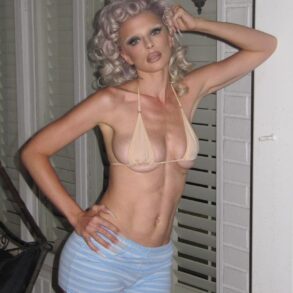
Manipulating people is big business. No, I’m not writing about the 24-hour news outlets and their constant need to generate copy, but rather something much closer to home.
Advertising works for those not disciplined enough to buy on a whim. How advertisers bend the eye to the audience borders on an art form.
We all know that beer, tire, and truck commercials peak during college and NFL broadcasts, and we can guess that those afternoon “Soap Operas” still sell detergent, hand cream, and other female directed marketing. The name “Soap Opera” originated in the days of radio when these serial broadcasts were all sponsored by the likes of Palmolive, Tide, and Charmin.
Advertisement
Yep, it’s good to know your audience.
Lately, it’s not even about the products but some stylized “woke” version of how America should look that dominates advertising.
If you pay attention to television commercials, and even directed advertising on Facebook and other social media you soon notice that what they are trying to portray is vastly different than the actual demographics of American society.
White, adult men, at least straight ones, are rare these days. There are many products trying to push their wares with gay couples, but the single, straight White guy, is near the bottom of modern advertising.
Advertisement
Near the bottom, not at the bottom, because you’ll have trouble finding Asian men in a commercial at all. Asian women are common in both television and social media but their other half is almost nonexistent.
It’s claimed the bias directed toward Asian men is a byproduct of the Vietnam War. Those aging GIs and Marines remember the pretty young Vietnamese gals but harbor horrible, nightmarish images of Vietnamese men. Advertisers know this, so Asian guys just don’t get the airtime, while their sisters, wives, and daughters are prime players in the never ending effort to sell whatever new and improved product is being hawked.
The perfect demographic for electronics, clothes, restaurants, and consumer goods is a gaggle of fashionably dressed, 20-something women with bright smiles and ridiculously bouncy hair.
Advertisement
The Black girl with the springy curls takes front and center, with her Japanese or Korean friend (almost always wearing glasses to appear studious) sitting nearby. Add in a redhead with similar hair to the black girl and a tall, leggy blond and you have the perfect advertising ensemble. Don’t believe it? Pay attention for the next couple of days and you’ll see.
Young Black men with carefully sculpted beards, and Gentleman’s Quarterly perfect haircuts are a hot commodity as well. They’re everywhere, filling the airwaves and the bandwidth with their images.
When it comes to family settings, there is a shortage in advertising agencies for bi-racial children and teenagers. There just aren’t enough of them to fill the screen when mom and dad are always a mixed-race couple.
Advertisement
You may see a few husband and wife ads of the same race, but not many. Dad, and increasingly, Mom is portrayed by a Black actor or actress (the woke crowd decries the term “actress” preferring actor, but with 189 genders and counting who can keep up?) with the other partner often a Nordic blond or Irish. It’s all part of the game.
If society was equally matched by the images advertising is trying to sell, the 60% of the American people that are Caucasian would only be about 15%. The 14% of us that are Black, would expand to over 50% and the 20% of Americans who are Hispanic would…Wait, where are the Hispanic people in national advertising?
Aside from a few images of working class guys as tattoo artists, or urban artists decorating the landscape with spray paint, you don’t see Hispanics at all. The Hispanic people you do see are almost always male, and most of the time they’re selling beer. What’s the message they’re trying to shove down our throats?
Even with that miniscule share of the market carried by Asian men, and Hispanic women, it exceeds the screen time of America’s original inhabitants.
There are approximately 9,000,000 Native Americans in the United States, they constitute about three percent of the nation’s total population. When was the last time you saw a Navajo, Seminole, Arapaho, Oglala, or Shoshone man or woman on the small screen selling tires, batteries, or paper towels? You can count it on no hands, there aren’t any. Why the disparity?
Native American actors are experiencing a boom on both the big and small screens. You’d be hard pressed to find anyone more popular than Moses Brings Plenty, who plays the sensitive tough guy on Yellowstone. His boss in the series, played by Gil Birmingham a member of the Comanche tribe, plays the sketchy tribal chairman Thomas Rainwater. They are both excellent in their roles.
The now syndicated series “Longmire” had an even larger cast of popular Native American actors. Zahn McClarnon who played the annoying but likeable tribal police officer Matthias is part Hunkpapa.
Henry Standing Bear, owner of the Red Pony was played by Lou Diamond Phillips. Phillips is Filipino and Cherokee. An Asian and Native American man all rolled into one. He was great as Walt Longmire’s best friend, but he’d never get a job selling Buicks, razors, tires, or motorcycles in the carefully calculated world of race based advertising. It’s all so strange.
Why can’t people just be people without all the labels?
Maybe it’s just the social pendulum swinging to the other extreme.
Check out the old westerns on TV especially. The Native Americans were almost always played by Italian actors and there were almost no Black or Asian, actors at all. There were plenty of Hispanic extras, always playing the villain.
John Ford was the exception, hiring local Native Americans for roles and as extras in his classic westerns, but in what many consider the best film he produced he selected a German actor, Henry Brandon to play Chief Scar of the Comanche. It appears racial accuracy didn’t matter to Ford or his star John Wayne, so in the climactic scene, Ethan Edwards played by Wayne, killed a German playing a Comanche.
Hollywood, advertising, and social media all share the same views of reality.
If you believed what they offer, 30 to 40 percent of Americans would be gay, rather than the actual percentages which move the decimal point to the left for an estimate of three to four percent.
Someone must be making money, or at least purporting to while they attempt to slant our collective view of the world.
As for most of us, we just want to watch a creatively written script played by realistic actors. Save the drama for the politicians.
Advertisement
This post was originally published on this site be sure to check out more of their content.





